Results 2,741 to 2,750 of 12096
Thread: Anandtech News
-
03-19-13, 06:30 PM #2741
Anandtech: NVIDIA Updates GPU Roadmap; Announces Volta Family For Beyond 2014
As we covered briefly in our live blog of this morning’s keynote, NVIDIA has publically updated their roadmap with the announcement of the GPU family that will follow 2014’s Maxwell family. That new family is Volta, named after Alessandro Volta, the physicist credited with the invention of the battery.
At this point we know very little about Volta other than a name and one of its marque features, but with how NVIDIA operates that’s consistent with how they’ve done things before. NVIDIA has for the last couple of years operated on an N+2 schedule for their public GPU roadmap, so with the launch of Kepler behind them we had been expecting a formal announcement of what was to follow Maxwell.
In any case, Volta’s marque feature will be stacked DRAM, which sees DRAM placed very close to the GPU by placing it on the same package, and connected to the GPU using through-silicon vias (TSVs). Having high bandwidth, on-package RAM is not new technology, but it is still relatively exotic. In the GPU world the most notable shipping product using it would be the PS Vita, which has 128MB of RAM in a wide-IO (but not TSV) manner. Meanwhile NVIDIA competitor Intel will be using a form of embedded DRAM for their highest-performance GT3e iGPU for their forthcoming Haswell generation CPUs.
The advantage of stacked DRAM for a GPU is that its locality brings with it both bandwidth and latency benefits. In terms of bandwidth the memory bus can be both faster and wider than an external memory bus, depending on how it’s configured. Specifically the close location of the DRAM to the GPU makes it practical to run a wide bus, while the short traces can allow for higher clockspeeds. Meanwhile the proximity of the two devices means that latency should be a bit lower – a lot of the latency is in the RAM fetching the required cells, but at the clockspeeds GDDR5 already operates at the memory buses on a GPU are relatively long, so there are some savings to be gained.
NVIDIA is targeting a 1TB/sec bandwidth rate for Volta, which to put things in perspective is over 3x what GeForce GTX Titan currently achieves with its 384bit, 6Gbps/pin memory bus (288GB/sec). This would imply that Volta is shooting for something along the lines of a 1024bit bus operating at 8Gbps/pin, or possibly an even larger 2048bit bus operating at 4Gbps/pin. Volta s still years off, but this at least gives us an idea of what NVIDIA needs to achieve to hit their 1TB/sec target.
What will be interesting to see is how NVIDIA handles the capacity issues brought on by on-chip RAM. It’s no secret that DRAM is rather big, and especially so for GDDR. Moving all of that RAM on-chip seems unlikely, especially when consumer video cards are already pushing 6GB (Titan). For high-end GPUs this may mean NVIDIA is looking at a split RAM configuration, with the on-chip RAM acting as a cache or small pool of shared memory, while a much larger pool of slower memory is attached via an external bus.
At this point Volta does not have a date attached to it, which is unlike Maxwell which originally had a 2013 date attached to it when first named. That date of course slipped to 2014, and while it’s never been made clear why, the fact that Kepler slipped from 2011 to 2012 is a reminder that NVIDIA is still tied to TSMC’s production schedule due to their preference to launch new architectures on new nodes. Volta in turn will have some desired node attached to its development, but we don’t know what at this time.
With TSMC shaking up its schedule in an attempt to catch up to Intel on both nodes and technology, the lack of a date ultimately is not surprising since it’s difficult at best to predict when the appropriate node will be ready 3 years out. On that note it’s interesting to note that while NVIDIA has specifically mentioned FinFET transistors will be used on their Parker SoC, they have not mentioned FinFET for Volta. Coming from their investor meeting the question came up, and while it wasn’t specifically denied we were also left with no reason to expect Volta to be using FinFET, so make of that what you will.
Meanwhile, in NVIDIA tradition they’ve also thrown out a very rough estimate of Volta’s performance by plotting their GPUs against a chart of FP64 performance per watt. Today Kepler is already at roughly 5.5 GFLOPS/watt for K20X, while Volta is plotted at 24ish. Like the rest of the GPU industry NVIDIA remains to be power constrained, so at equal TDPs we’d expect roughly four times the performance of K20X, which would put total FP64 performance at around 5 TFLOPS. But again, all of this is early into a GPU that will not be released for years.
Finally, while Volta is capturing the majority of the press due to the fact that it’s the newest GPU coming out of NVIDIA, this latest roadmap does also offer a bit more on Maxwell. Maxwell’s marque feature as it turns out is unified virtual memory. CUDA already has a unified virtual address space available, so this would seemingly go beyond that. In practice such a technology is important for devices integrating a GPU and a CPU onto the same package, which is what the AMD-led Heterogeneous System Architecture seeks to exploit. For NVIDIA their Parker SoC will be based on Maxwell for the GPU and Denver for the CPU, so this looks to be a feature specifically setup for Parker and Parker-like products, where NVIDIA can offer their own CPU integrated with a Maxwell GPU.
More...
-
03-19-13, 07:30 PM #2742
Anandtech: More Details On NVIDIA’s Kayla: A Dev Platform for CUDA on ARM
In this morning’s GTC 2013 keynote, one of the items briefly mentioned by NVIDIA CEO Jen-Hsun Huang was Kayla, an NVIDIA project combining a Tegra 3 processor and an unnamed GPU on a mini-ITX like board. While NVIDIA is still withholding some of the details of Kayla, we finally have some more details on just what Kayla is for.
The long and short of matters is that Kayla will be an early development platform for running CUDA on ARM. NVIDIA’s first CUDA-capable ARM SoC will not arrive until 2014 with Logan, but NVIDIA wants to get developers started early. By creating a separate development platform this will give interested developers a chance to take an early look at CUDA on ARM in preparation for Logan and other NVIDIA products using ARM CPUs, and start developing their wares now.
The platform itself is essentially a small computer. The CPU is a Tegra 3 processor – picked for its PCI-Express bus needed to attach a GPU – while the GPU is a Kepler family GPU that NVIDIA is declining to name at this time. Given the goals of the platform and NVIDIA’s refusal to name the GPU, we suspect this is a new ultra low end 1 SMX (192 CUDA new) Kepler GPU, but this is merely speculation on our part. Rounding out the kit will be the usual collection of I/O ports on Kayla’s motherboard (Ethernet, USB, audio, video) to enable the necessary connectivity.
NVIDIA was quick to note that Kayla is a development platform for ARM on CUDA as opposed to calling it a development platform for Logan; though at the same it unquestionably serves as a sneak-peak for Logan. This is in big part due to the fact that the CPU will not match what’s on Logan – Tegra 4 already is beyond Tegra 3 with its A15 CPU cores – and it’s unlikely that the GPU is an exact match either. Hence the focus on early developers, who are going to be more interested in making it work than the specific performance the platform provides.
It’s interesting to note that NVIDIA is not only touting Kayla’s CUDA capabilities, but also the platform’s OpenGL 4.3 capabilities. Because Kayla and Logan are Kepler based, the GPU will be well ahead of OpenGL ES 3.0 with regards to functionality. Tessellation, compute shaders, and geometry shaders are present in OpenGL 4.3, among other things, reflecting the fact that OpenGL ES is a far more limited API than full OpenGL. This means that NVIDIA is shooting right past OpenGL ES 3.0, going from OpenGL ES 2.0 with Tegra 4 to OpenGL 4.3 with Logan/Kayla. This may also mean NVIDIA intends to use OpenGL 4.3 as a competitive advantage with Logan, attracting developers and users looking for a more feature-filled SoC than what current OpenGL ES 3.0 SoCs are slated to provide.
Wrapping things up, Kayla will be made available in the spring of this year. NVIDIA isn’t releasing any further details on the platform, but interested developers can go sign up to receive updates over at NVIDIA’s Developer Zone webpage.
On a lighter note, for anyone playing NVIDIA codename bingo, we’ve figured out why the platform is called Kayla. Jen-Hsun called Kayla “Logan’s girlfriend”, and it turns out he was being literal. So in keeping with their SoC naming this is another superhero-related name.
More...
-
03-20-13, 02:00 AM #2743
Anandtech: Piz Daint Supercomputer Announced, Powered By Tesla K20X
Along with NVIDIA’s keynote this morning (which should be wrapping up by the time this article goes live), NVIDIA also has a couple other announcements that are hitting the wire this morning. The first of which is the announcement of NVIDIA landing another major supercomputer contract, this time with the Swiss National Computing Center (CSCS).
CSCS will be building a new Cray XC30 supercomputer, “Piz Daint.” Like Titan last year, Piz Daint is a mixed supercomputer that will pack both a large number of CPUs – Xeon E5s to be precise – and of course to great interest to NVIDIA, a large number of Tesla K20X GPUs. We don’t have the complete specifications for Piz Daint at this time, but when completed it is expected to exceed 1 PFLOPS in performance and be the most powerful supercomputer in Europe.
Piz Daint will be filling in several different roles at CSCS. Its primary role will be weather and climate modeling, working with Switzerland’s national weather service MeteoSwiss. Along with weather work, CSCS will also be using time on Piz Daint for other science fields, including astrophysics, life science, and material science.
For NVIDIA of course this marks another big supercomputer win for the company. Though not a huge business on its own at this time relative to the complete Tesla business, wins like Titan and Piz Daint are prestigious for the company due the importance of the work done on these supercomputers and the name recognition they bring.
More...
-
03-20-13, 03:31 AM #2744
Anandtech: Logitech's G Series Branding and Product Refresh
Logitech has been producing peripherals for some time now, but what they've lacked is a concrete "this is for enthusiasts" brand identity. Ordinarily a vendor producing a specific "gaming" brand is met with eyerolls and rightfully so, but Logitech's gaming peripherals have sort of floated in their expansive product lineup with only the "G" prefix to really distinguish them. What we're looking at today is a push towards a very concrete, very distinct branding that will make Logitech's gamer oriented products much more readily identifiable.
As far as the refresh itself goes, we'll start with the quartet of mice being released. These are essentially refreshes of many of their existing mice with new skins and more importantly, newer and better hardware under the hood. The new versions all see an "s" suffix added to the model numbers, but with them we get better switches and sensors across the board.
Other than the upgraded internals, Logitech deliberately hewed very closely to the existing designs in terms of both materials and feel. Their attitude was "If it ain't broke, don't break it," and while my first inclination might be to chide them on being lazy, the reality is that I agree. These mice (especially the G500) were nigh perfect on their initial release, so there's little reason to mess with success. I will note that I'm not a huge fan of the new visual design, though. MSRP for these mice will be $39 for the G100s, $59 for the G400s, $69 for the G500s, and $99 for the G700s wired/wireless combo mouse.
Next on the agenda are Logitech's new keyboards, but I have a slightly harder time getting excited about these.
These keyboards are straight up new products. Both feature completely color-configurable full-keyboard backlighting and Logitech's GamePanel LCDs. The GamePanels have apparently been pretty popular on their existing keyboards, and Logitech isn't really messing with success with these new keyboards. Instead they've improved durability by using hydrophobic coatings on the palm rest while double-coating the keys for improved longevity. That said, Logitech went with the RGB color-configurable backlighting as opposed to mechanical key switches, so these are still membrane keyboards. If you're like me, that's a bit of a disappointment.
The G19s has a full color LCD GamePanel and actually has an external power brick that allows it to use a single USB 2.0 connection while offering two powered USB 2.0 ports, the backlighting, and the panel. MSRP is set for $199.
The G510s is only slightly cut down; instead of the powered USB 2.0 ports, you get integrated USB audio that toggles on when you plug headphones and a microphone into it. I'm actually pretty keen on that as opposed to using a passthrough, as it makes Windows' clunky audio switching more tolerable. MSRP is set for $119.
Finally, Logitech is releasing two new headsets, both of which I found surprisingly comfortable. Finding a good gaming headset can be difficult for people who wear glasses (or even over-ear headphones in general), but the grip of the new headsets, the G430 and G230, was remarkably gentle while still being secure. Both headsets feature a noise-cancelling microphone. The more expensive G430 (at $79) sports 7.1 surround sound and includes a removable USB audio dongle, meaning you can opt to use it as a basic pair of headphones if you're so inclined. Meanwhile, the more affordable G230 (at $59) foregoes these accoutrements, instead offering basic stereo sound.
Common to all of these products, Logitech is unifying device drivers under one piece of software (something some of their competitors still lack), all but the G430 are Mac compatible (though there's no reason you can't remove the USB dongle and use the G430 as a basic headset on a Mac.) Availability is scheduled for the beginning of April 2013 in the United States, and May 2013 in Europe.
More...
-
03-21-13, 05:31 AM #2745
Anandtech: Dell XPS 13 (Q1 2013) Ultrabook Review: What a Difference 1080p Makes
Around this time last year, we had a chance to take a look at Dell's first ultrabook, the XPS 13. This was an ultrabook I was for the most part fond of, but one that was clearly suffering from being first generation ultrabook hardware. Ultra low-voltage Sandy Bridge chips were perfectly serviceable, but they could still generate a tremendous amount of heat in a chassis the size of the XPS 13. That meant noise and heat were both serious issues. Compounding that was a routine, run-of-the-mill, utterly dismal 1366x768 TN panel display.
More...
-
03-21-13, 04:00 PM #2746
Anandtech: The HTC One: A Remarkable Device, Anand’s mini Review
For the past week and a half our own Brian Klug has been hard at work on his review of HTC’s new flagship smartphone, the One. These things take time and Brian’s review, at least what I’ve seen of it, is nothing short of the reference piece we’ve come to expect from him.
In the same period of time I’ve been playing around with a retail HTC One and felt compelled to share my thoughts on the device. It’s rare that I’m so moved by a device to chime in outside of the official review, but the One is a definite exception.
More...
-
03-21-13, 11:30 PM #2747
Anandtech: AMD Radeon HD 7790 Review Feat. Sapphire: The First Desktop Sea Islands
Launching today is AMD’s second new GPU for 2013 and the first GPU to make it to the retail desktop market: Bonaire. Bonaire in turn will be powering AMD’s first new retail desktop card for 2013, the Radeon HD 7790. With the 7790 AMD intends to fill the sometimes wide chasm in price and performance between their existing 7770 (Cape Verde) and 7850 (Pitcairn) products, and as a result today we’ll see just how Bonaire and the 7790 fit into the big picture for AMD’s 2013 plans.
More...
-
03-23-13, 02:00 PM #2748
Anandtech: QNAP Launches Marvell-based 4-bay Rackmount NAS Units
Rackmount NAS units introduced in recent days have been mostly based on the powerful Intel processors, but there is a market demand amongst small workgroups and SMBs for low power NAS devices in that form factor. In order to serve this market, QNAP is launching the TS-421U and TS-420U, both of which are based on the tried and tested Marvell 6282 CPU.
The 420U runs the CPU at 1.6 GHz, while the 421U cranks it up to 2.0 GHz. Both units have four hot-swappable bays in a 1U rackmount form factor. There are two GbE ports, two USB 3.0 ports, two eSATA ports and a single USB 2.0 port in front. The PSU is built-in. Internally, the units sport 1 GB of DDR3 DRAM (double that of the amount usually found in the Marvell-based 4-bay units with a tower form factor).
iSCSI (with think provisioning) support exists and the dual LAN ports can be configured in various port trunking modes. Windows AD and LDAP directory services can help in easy account setup from a AD/LDAP-based directory server. Backup strategies available in the new units include Real-time Remote Replication (RTRR)
, backup to cloud storage and support for third-party backup softwares. Time Machine is supported and QNAP provides the NetBak replicator for backing up PC data to a Turbo NAS.
More details about the two new rackmount products can be found here.
More...
-
03-23-13, 02:30 PM #2749
Anandtech: QNAP Launches Marvell-based 4-bay Rackmount NAS Units
Rackmount NAS units introduced in recent days have been mostly based on the powerful Intel processors, but there is a market demand amongst small workgroups and SMBs for low power NAS devices in that form factor. In order to serve this market, QNAP is launching the TS-421U and TS-420U, both of which are based on the tried and tested Marvell 6282 CPU.
The 420U runs the CPU at 1.6 GHz, while the 421U cranks it up to 2.0 GHz. Both units have four hot-swappable bays in a 1U rackmount form factor. There are two GbE ports, two USB 3.0 ports, two eSATA ports and a single USB 2.0 port in front. The PSU is built-in. Internally, the units sport 1 GB of DDR3 DRAM (double that of the amount usually found in the Marvell-based 4-bay units with a tower form factor).
iSCSI (with think provisioning) support exists and the dual LAN ports can be configured in various port trunking modes. Windows AD and LDAP directory services can help in easy account setup from a AD/LDAP-based directory server. Backup strategies available in the new units include Real-time Remote Replication (RTRR), backup to cloud storage and support for third-party backup softwares. Time Machine is supported and QNAP provides the NetBak replicator for backing up PC data to a Turbo NAS.
More details about the two new rackmount products can be found here.
More...
-
03-25-13, 07:31 AM #2750
Anandtech: Ubiquiti Networks Brings 802.11ac to Enterprise Wi-Fi APs
The enterprise Wi-Fi market is a hotly contested one with expensive offerings from companies such as Aruba Networks and Ruckus Wireless being the preferred choice of many IT administrators. Primary requirements for products in this market are the ability to support high client device densities and the provision of a robust and flexible management interface.
Ubiquiti Networks, founded in 2005, entered this market in Q4 2010 with their UniFi series. The offerings surprised the market with very attractive pricing while providing all the features available from the tier-one vendors. While those vendors have been a bit cautious in jumping on to the 802.11ac bandwagon, Ubiquiti is going ahead and launching the UniFi 3.0 Wi-Fi access point platform along with what seems to be the first 802.11ac enterprise AP.
The 802.11ac access point is based on the Broadcom platform (With the BCM4706 SoC, just like all the 802.11ac consumer routers / APs in the market right now). The APs also have wireless mesh capabilities. In a multi-AP deployment, wired uplinks are not needed for all of the access points.
The differentiating aspect of Ubiquiti's offering is the free UniFi 3.0 management software and controller. The latter can be run on-premises, or deployed in the cloud (either private or public). Some of the interesting features of UniFi include 'zero hand-off roaming' which allows users to roam while seamlessly switching between different access points without latency or interoperability issues. In essence, multiple APs can appear as a single AP to client devices. A single UniFi controller can manage multi-site distributed deployments. UniFi also provides detailed analytics and WLAN grouping capabilities, which are taken for granted in the enterprise Wi-Fi AP space.
Ubiquiti's UniFi 3.0 platform / 802.11ac AP is schedule to launch next month at a price point of just $299. With the arrival of 802.11ac-capable smartphones such as the HTC One and the Samsung Galaxy S4, enterprise IT administrators are bound to be on the lookout for 802.11ac-capable gear. Ubiquiti Networks seems well-positioned to tap into that market.
A challenge for Ubiquiti would be the fact that solution providers in any enterprise space are usually well-entrenched. Administrators are also wary of trying out new vendors because of support issues and a multitude of other factors. Do any of our readers have experience with Ubiquiti's products in the enterprise space? Feel free to let us know about it in the comments.
More...
Thread Information
Users Browsing this Thread
There are currently 37 users browsing this thread. (0 members and 37 guests)





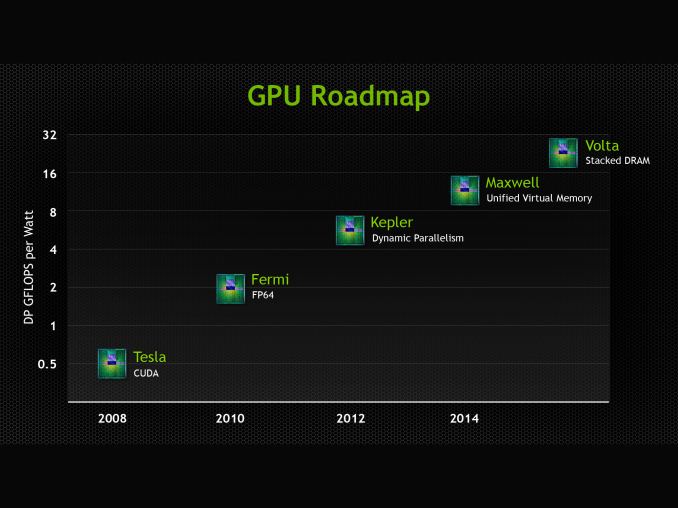

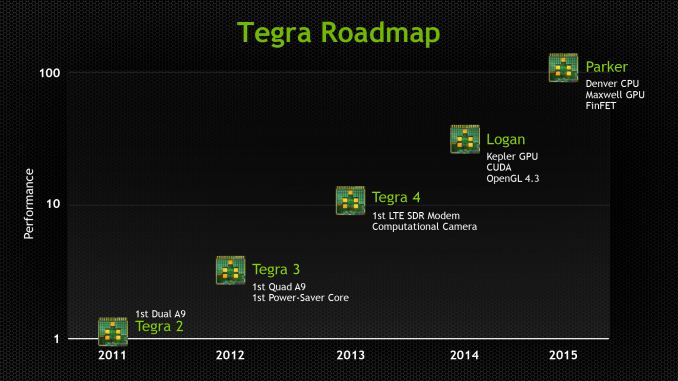

 Quote
Quote


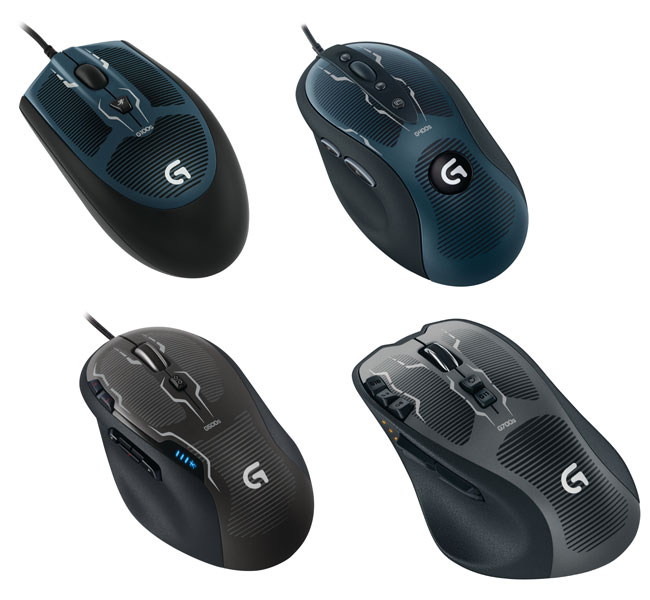
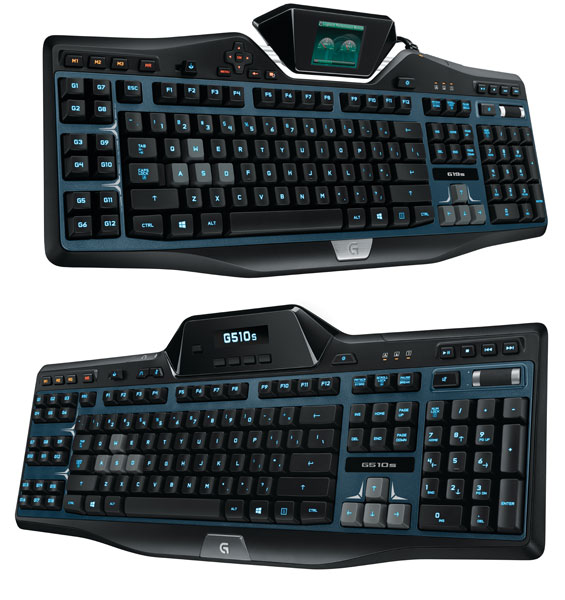
.jpg)



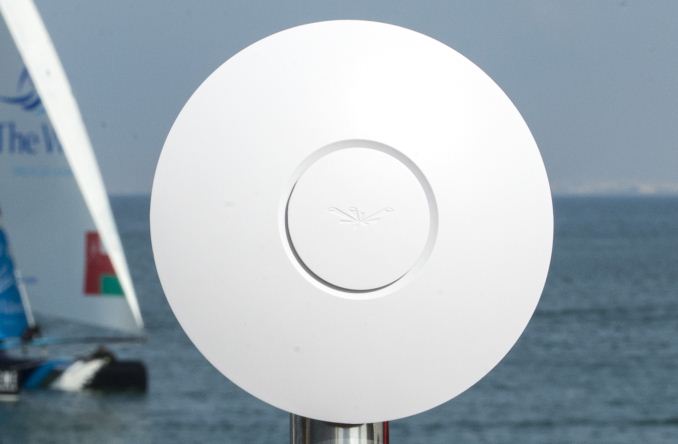
















Bookmarks